Kershaw Leek is a sleek-style pocketknife with a Wharncliffe blade and a hollow grind. It comes with flipper and thumb stud openers with a sturdy linerlock and a tip-up and tip-down pocket clip.
Kershaw Leek Review
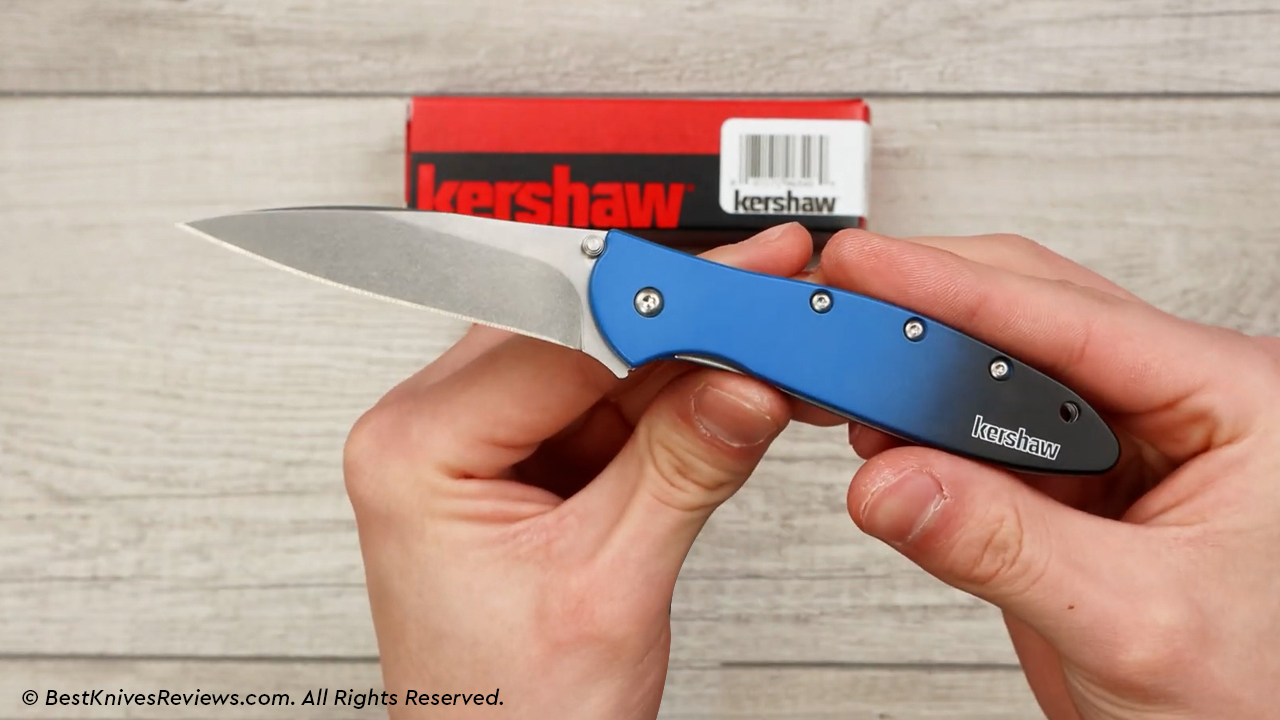
Kershaw Leek is one of the sleekest spring-assisted knives available in 2024. It features Kershaw’s patented SpeedSafe technology with the ambidextrous thumb stud that opens the knife with a single push. It is an ideal single-handed opener with a reversible pocket clip and a tip safety lock.
The knife is 7” long in a fully open position with a 3” Wharncliffe hollow grind blade made of stonewashed MagnaCut with a plain edge. The handle is a gradient black and blue 4” aluminum with a linerlock as its locking mechanism and SpeedSafe spring-assisted thumb studs for deployment. It weighs only 3 ounces.
Kershaw Leek Prices |
||
|---|---|---|
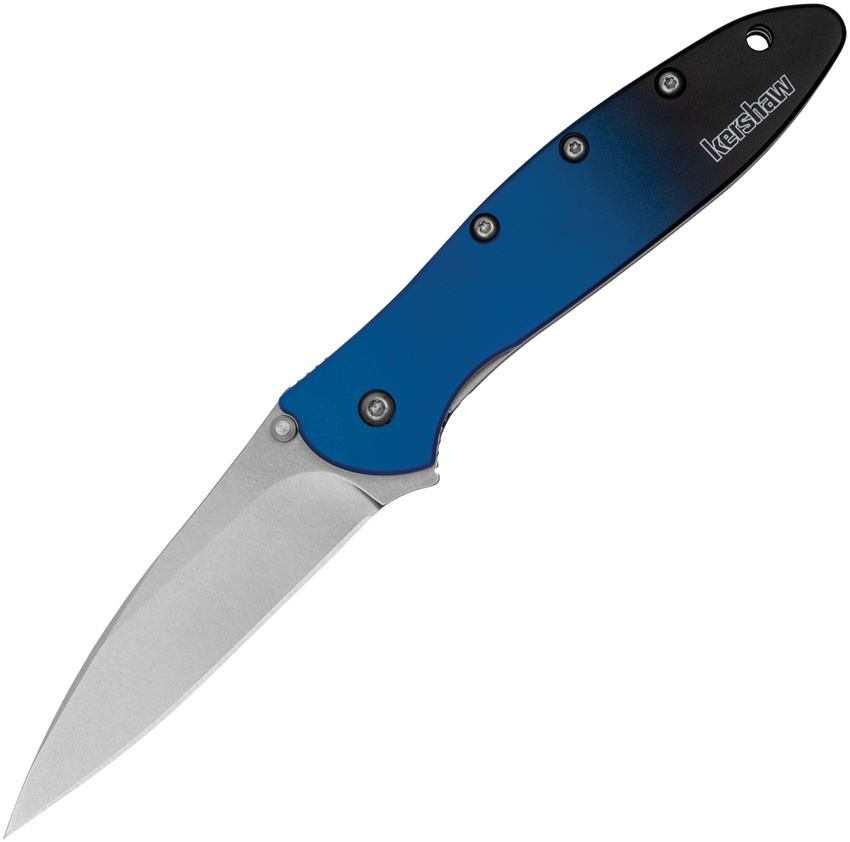 |
 |
Check Price at Blade HQ |
 |
Check Price at Chicago Knife Works | |
Key Specifications of Kershaw Leek
First Impressions of Kershaw Leek
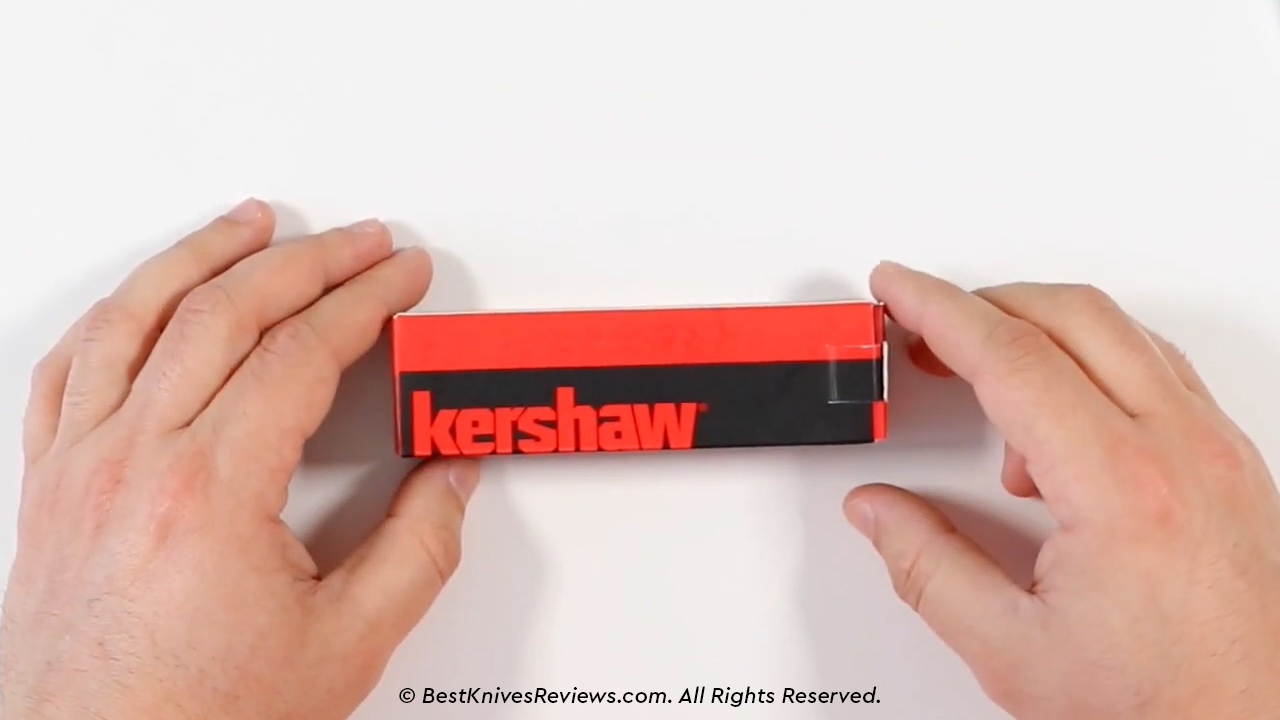
The Kershaw Leek came in a standard branded cardboard box with the Kershaw Leek, an instructions manual, along with the detailed specs and usage of the knife.
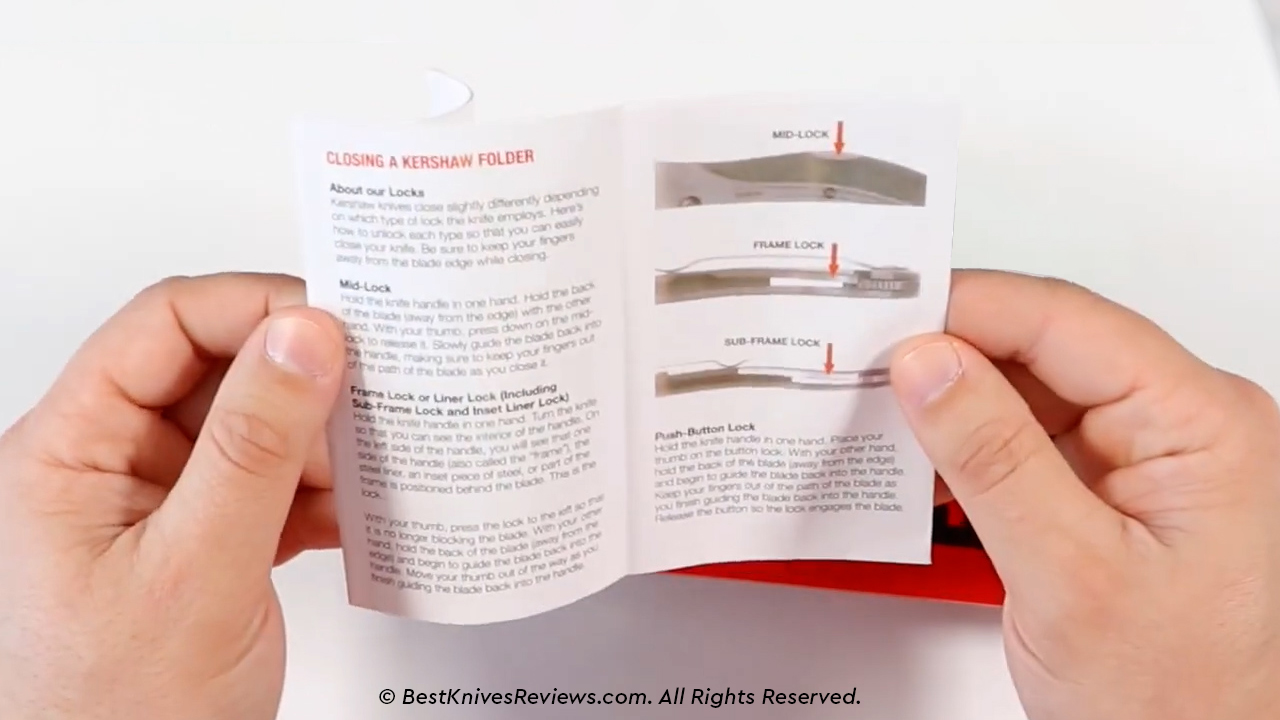
It felt light, slim, sharp, and fast at first impression. The blade had a nice factory edge right out of the box with a good edge retention. At the same time, it felt delicate yet held its place within the liners. The blade and the handle had very fine finishing without any scratches on it. The pocket clip is secure and the handle feels nice and tight in the hand. There is also this general impression that the US-made blades are better than the imported ones. So we definitely had the advantage of a superior CPM MagnaCut blade with a hollow grind that is also easy to sharpen.
The secondary lock can be a bit of an annoyance unless you tighten it or remove it completely. However, we have to be careful with its usage. It cannot be used for heavy cutting tasks, or the blade’s edge will break. You have to keep the intended use in mind with the Kershaw Leek. Its sleek design makes it a gentleman’s folder and can work in the office and around the house for lighter EDC tasks.
The gradient colors of the knife are definitely attractive and provide a good look and feel for the knife. The stonewash finish would not come off easily. It is very well done. The knife hangs well in the pocket in the tip-up and tip-down position and does not create any hot spots, neither does it take too much space. So, it is a breeze to carry the Kershaw Leek.
Although the knife can be a bit fiddly at first, but once you get used to it, the deployment and lockup are pretty solid with no bumps or blade play whatsoever.
The Blade of Kershaw Leek
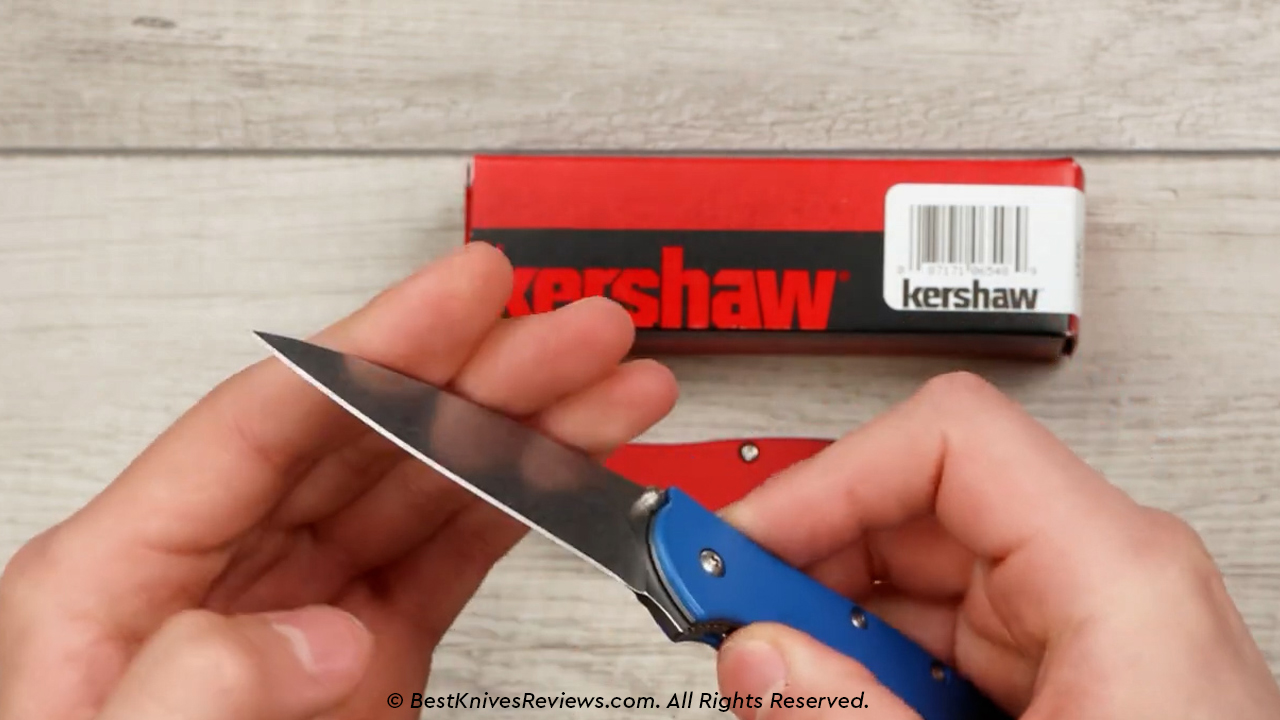
The Kershaw Leek features a standard 3” MagnaCut stainless steel blade stonewashed and with a Wharncliffe hollow grind. It is named after a vegetable Leek for its sleek and slim design and its lightweight (3 oz.) is aimed at the EDC market.
However, the flat edge of Leek’s blade is completely devoid of belly. This makes the knife more suitable for tasks that require the tip of the blade. MagnaCut is an all-round good steel blade that combines maximum sharpness and stain resistance. It makes the knife versatile for various blade shapes and profiles. The MagnaCut is a premium steel that enhances the knife’s cutting power.
The Wharncliffe blade is easy to sharpen, especially with a sharp edge like that on Leek unlike curved edges. When we use the Leek to make precise cuts, the entire cutting edge of 2.95” engages appropriately with the right amount of pressure. It gives enough leverage into the cut. However, the tip of the Leek is especially delicate. So it is better not to pry with the knife or drop it.
The no belly or forward curvature of the blade may render the knife useless when it comes to food preparation, or skinning without piercing the hide. But, it is good for opening packages and cutting cardboard boxes.
However, the premium CPM MagnaCut is good for its price, aka $98.99.
The Handle & Ergonomics of Kershaw Leek
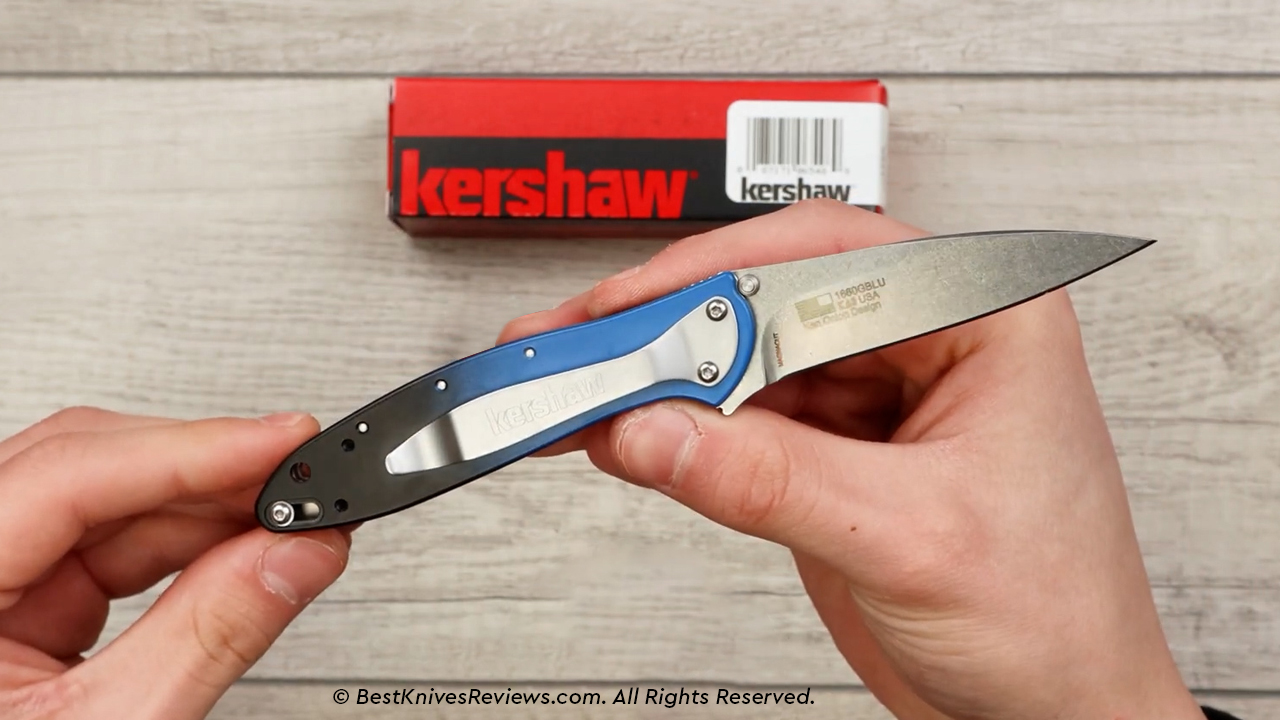
The handle of Kershaw Leek is available in full stainless steel with a framelock, or aluminum with a linerlock. The one we have is a gradient blue and black aluminum handle with the linerlock. At 4”, it feels pretty good in the hand. It also comes with extended tang and lanyard hole. You can easily attach a lanyard to extend the knife’s length. The aluminum handle provides a better grip, while the stainless steel provides heft.
The scales are assembled with screws rather than pins. That makes it easier to disassemble the knife for maintenance with Torx T6 bit.
The fit and finish of the scales is excellent, as all the parts line up neatly without any awkward bumps. The finish work is also good without any tooling marks. It is a rather simple design done well.
The aluminum handle with its 3 ounce weight is ideal for light to medium use. You can easily place all your four fingers around the handle with the thumb on the thumb ramp. There is little bit of jimping on the thumb ramp, which is not very aggressive, but does catch the skin a little. Therefore, it lacks traction and must not be used for heavier tasks such as skinning a rabbit. But for the knife of this size and composition, it has good ergonomics.
The stainless steel liners is a good addition to this folding knife. The blade sits perfectly well-aligned inside the scales and opens up rightfully.
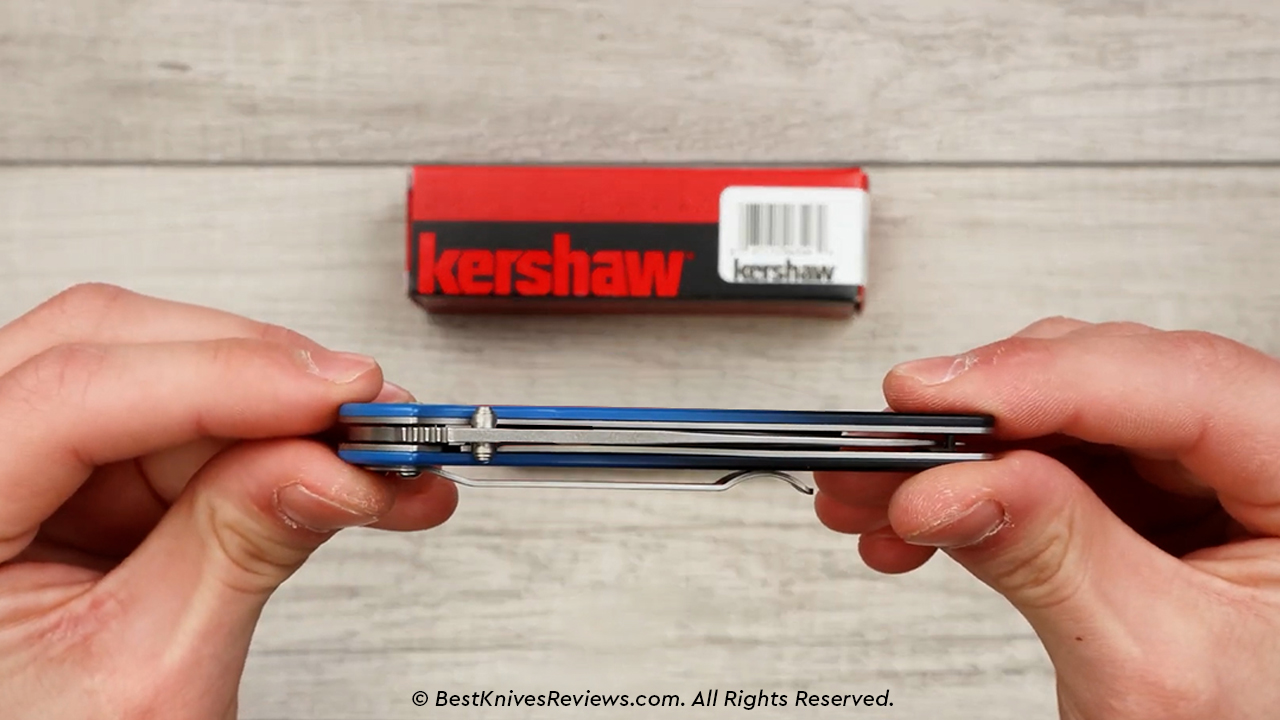
The easy disassembling and reassembling of the knife also makes it easy to clean and maintain the liners from the inside.
The pocket clip of Kershaw Leek is well-designed and well-placed. We also like the size and width of it. It is configured for tip-up and tip-down carry but is not ambidextrous. It also has great retention and does not create any hot spots when inside the pocket. It also does not take a lot of space inside the pocket, which makes it easier to carry with other stuff.
The clip rides pretty low if you mount it from tip-down position. But for tip-up carry, a good half inch of the knife protrudes out of the pocket. Hence, it is not exactly discreet carry, but holds comfortably while walking. As it is a small and lightweight knife, it would not draw much attention to itself.
Deployment and Lockup of Kershaw Leek
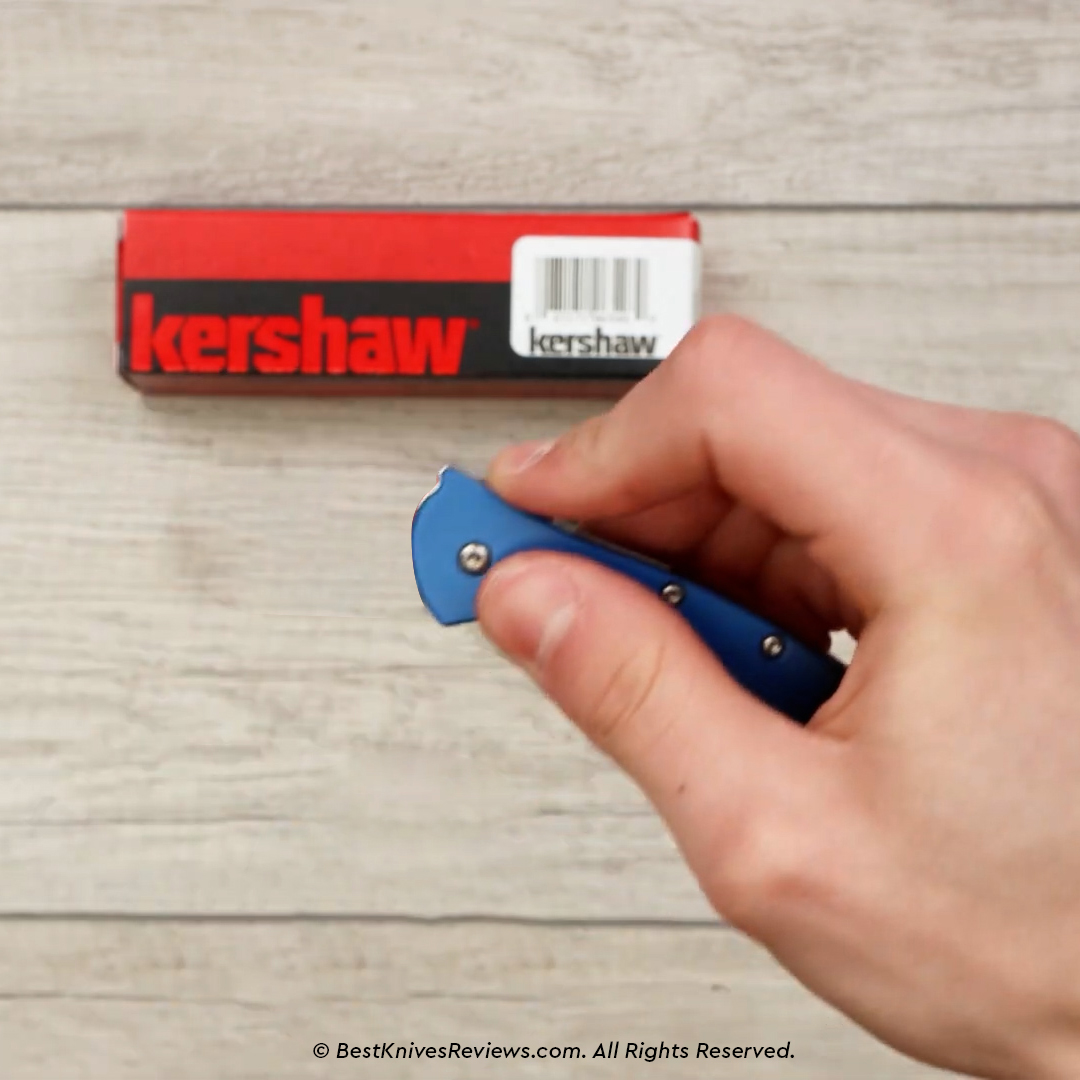
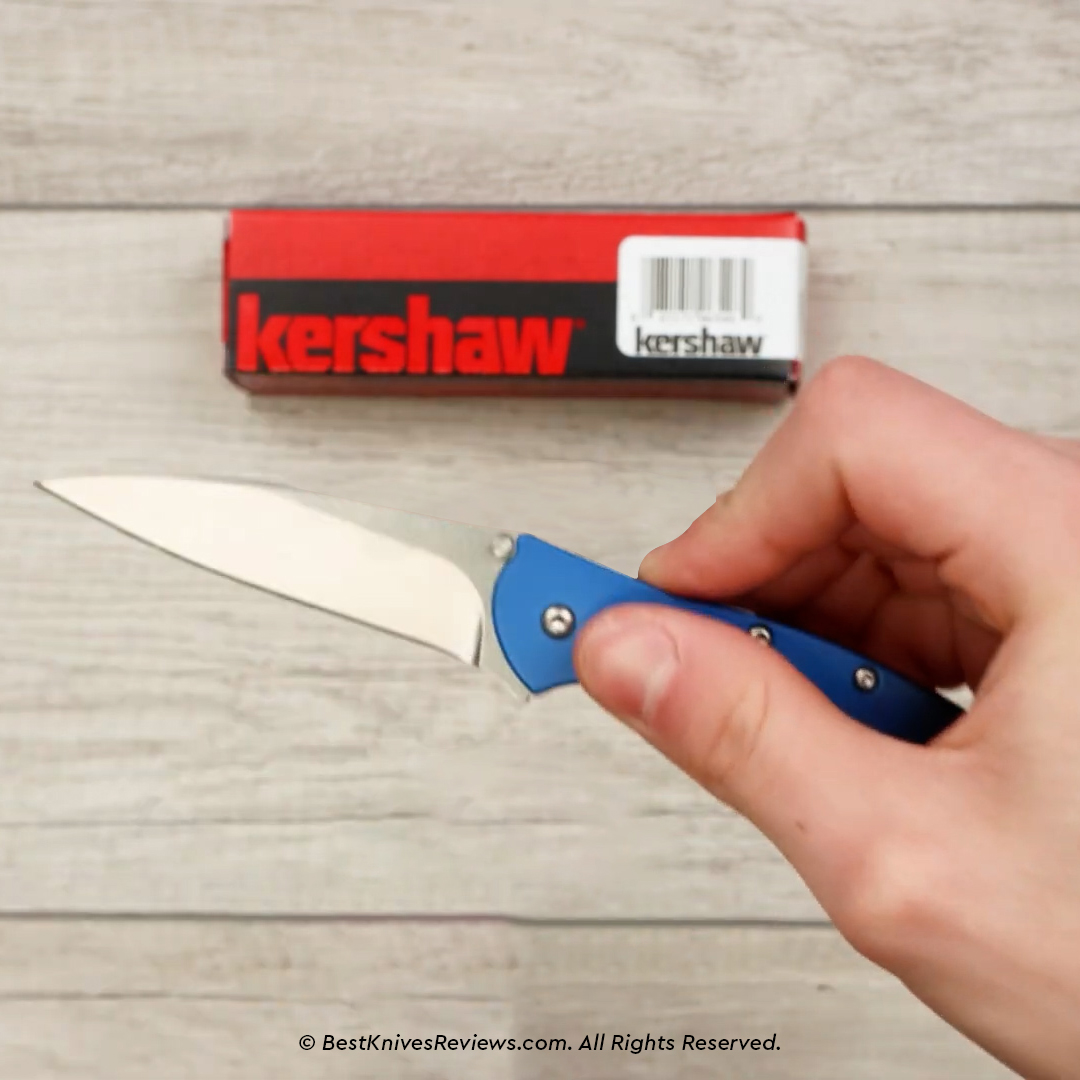
The Kershaw Leek is a spring-assisted folding knife, which means it opens manually but then the spring springs into action to open the blade fully. Ken Onion himself designed the spring-assisted opening called SpeedSafe technological deployment system. It is highly advanced and robust technology, and is used on many Kershaw and Zero Tolerance knives.
The Kershaw Leek deploys quickly with only a slight pressure on the thumb studs or the flipper. The best thing about these deployment mechanisms is that neither of them get stuck no matter how many times you flick the knife open and close. It is very reliable even after using it for an extended period. That also makes carrying the knife easier. You can easily flick it open in case of an emergency, and it will not disappoint.
The Leek carries a secondary safety lock option to keep the knife from opening accidentally. But it is loose and moves around when you do not want it to. But it can be tightened down or removed completely if you do not need it. The spring can also be removed for the knife to be used as non-assisted opening knife. The ball-bearing detent inside the lock bar makes it possible. But the Leek was essentially designed as a spring-assisted knife, and works well with the spring.
The locking mechanism features a linerlock, which is a popular and easy to use lockup mechanism on many folding knives. It is also hard to beat when it comes to price, and is a safe option. It uses one of the blade’s liners cut out and bent to create a spring effect. It engages the back of the blade tang when the blade is opened. The custom knife maker Michael Walker upgraded the linerlock to add a stop pin and detent ball anchored to precisely align with the liners and hold the blade in a closed position. It produces a snappy opening action, and the added safety to keep the blade from opening accidentally.
The knife does not show any blade play whatsoever. It sits comfortably and precisely inside the liners when in a closed position without poking out its sharp blade tip. The fingers do not come in the way of opening the knife, thanks to the spring-assisted opening.
The Leek is easy to operate with one hand, even if you are left-handed.
Field Test of Kershaw Leek
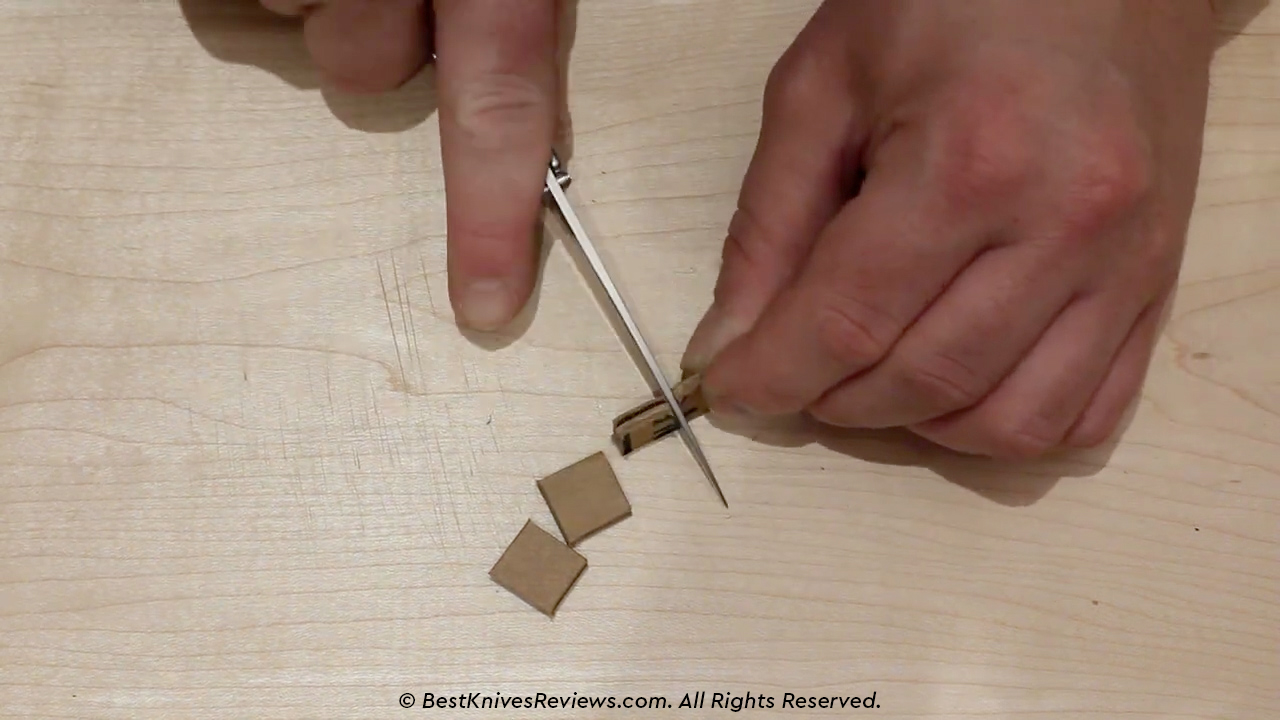
We tested the Kershaw Leek by cutting paper, cardboard and small dry sticks. It performed exceptionally well. It showed great edge retention, blade strength and resilience. It is great for its price and an excellent EDC knife.
It is much easier to carry than a heavy-duty EDC knife that weighs more and is larger than Leek. Its pocket clip is very sturdy and stays in the pocket without adding extra weight or real estate in the pocket. It may not be very discreet when carried in tip-down position, but you do not have to worry about it falling over.
Its blade length of 3” also makes it easier to carry in most States that allow 3” blade within its legal bounds. The handle is very ergonomically friendly, comfortable and grippy. It does not show too much wear and tear too soon. You can definitely use this knife for a longer period, given you keep it to light EDC tasks.
The lockup and deployment is exceptionally smooth. It easily flicks open without fail each time, and can be considered a good flipper. The removable spring-assisted opening further makes it easier for many different users.
Pros & Cons of Kershaw Leek
PRO’s
Con’s
Comparisons
Kershaw Leek vs Kershaw Blur
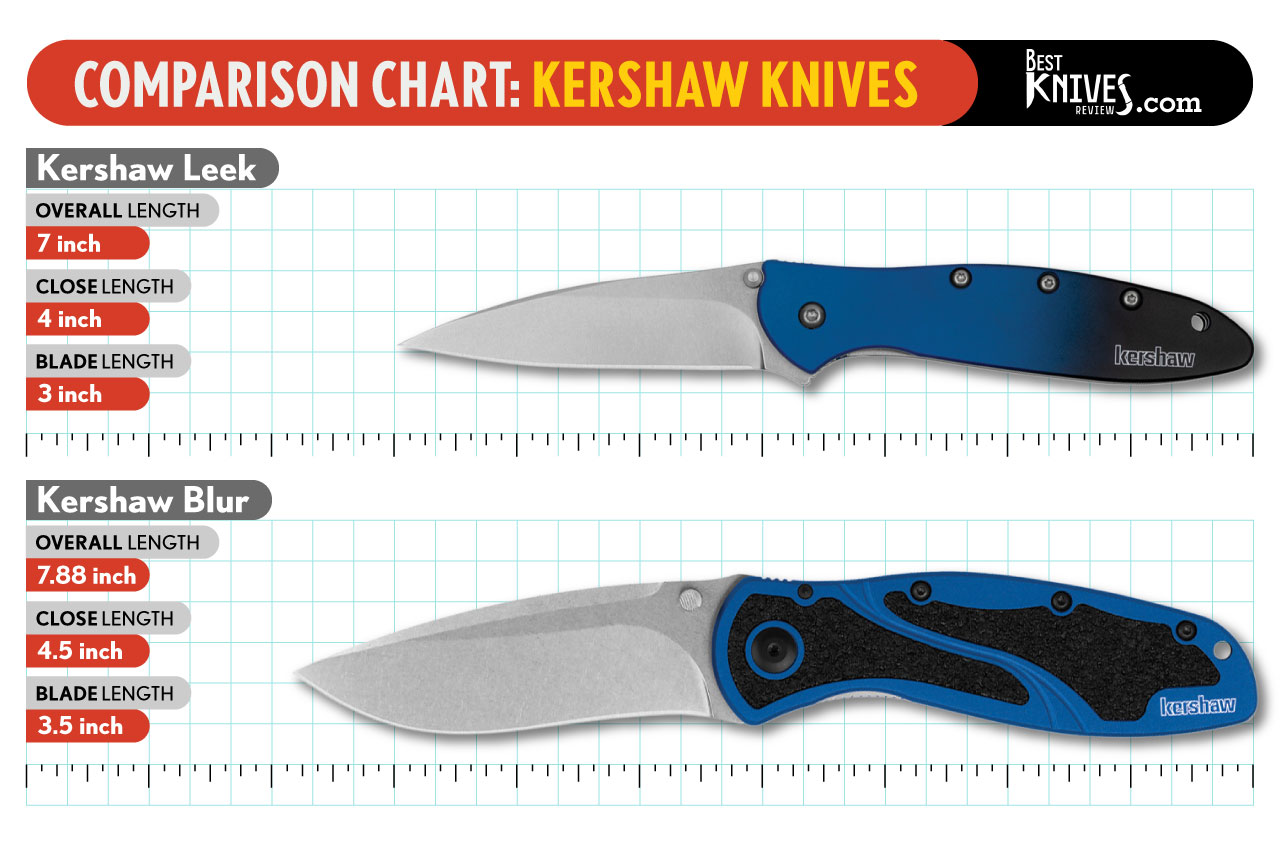
The Kershaw Blur is also a spring-assisted thumb stud opening folding knife like the Kershaw Leek. However, the Blur is more suited for heavier EDC tasks and costs more. It has drop point blade, which makes it easier for slightly bigger cutting tasks. It also comes in hollow grind and is stonewashed in MagnaCut just like the Leek, which is a premium stainless steel blade.
But the Kershaw Blur has enough belly on the blade and is wide enough for a firmer grip. It is also one inch bigger than the Leek with a blade length of 3.5”, which makes it more suitable for wider tasks like food preparation and skinning.
Both the knives have liner locks and sturdy pocket clips, and both are available in blue and black colors. Both the handles features aluminum material, except the Blur comes with Black Trac-Tec inserts for extra traction.
When it comes down to the two knives, it really depends on what purpose you want to use the knife for. The Kershaw Blur is suitable for medium to heavy EDC tasks and costs more. Whereas, the Leek can only handle light EDC tasks and costs less. But if used well, it will stay on for long.
Kershaw Blur Prices |
||
|---|---|---|
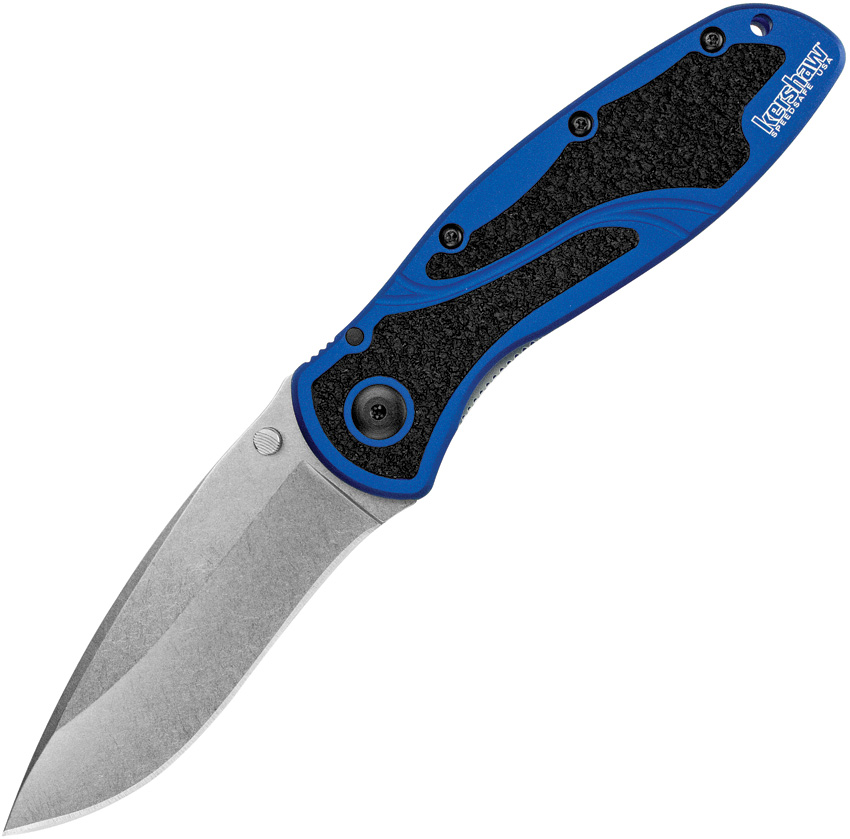 |
 |
Check Price at Blade HQ |
 |
Check Price at Chicago Knife Works | |
Kershaw Leek vs Kershaw Skyline
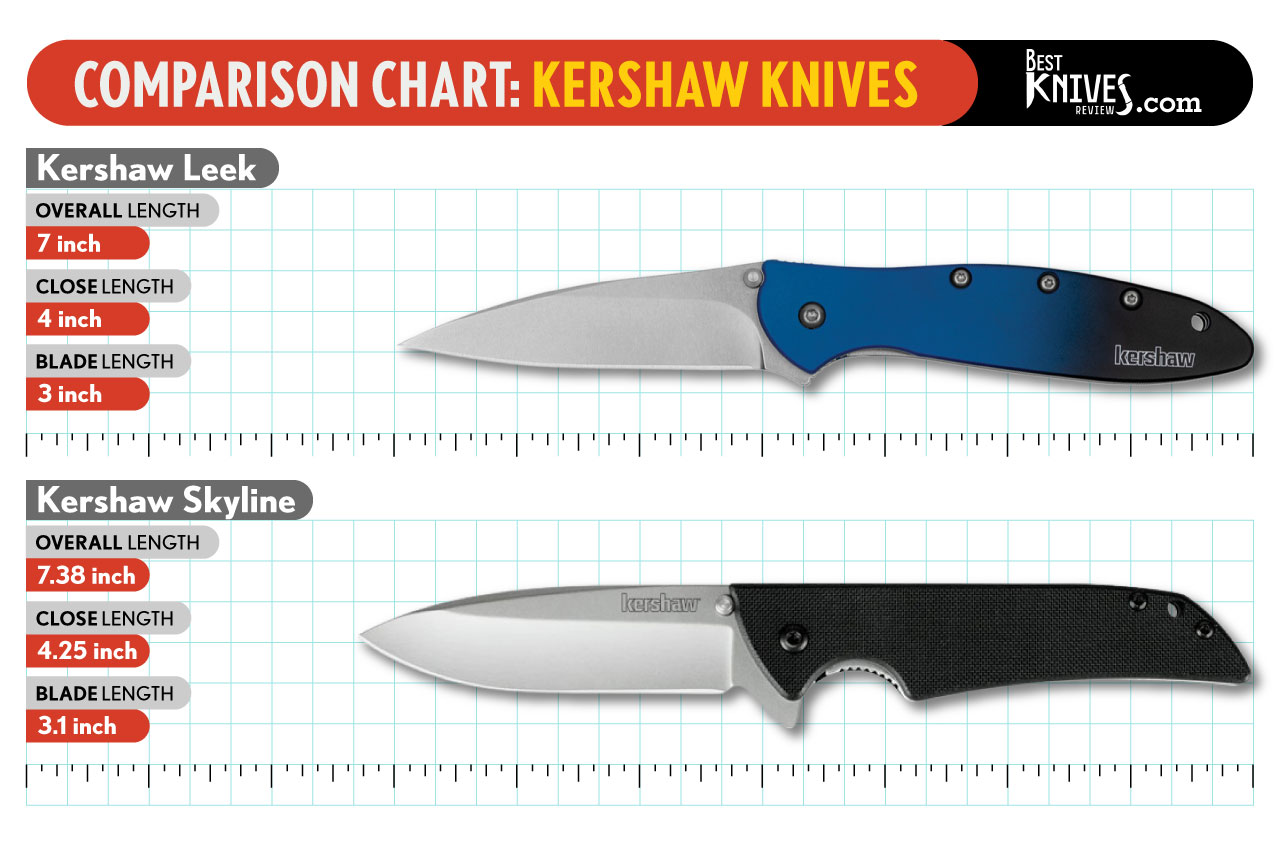
The Kershaw Skyline is similar in size to Kershaw Leek and comes with a thumb stud and linerlock. The Skyline may look sturdier, but weighs less than the Leek, at only 2.5 ounces. It features a G10 handle as opposed to Leek’s aluminum handle. It also comes with an exaggerated finger guard and choil, something that is missing on the Leek.
However, the Leek deploys faster because of its SpeedSafe assisted-opening technology. The blade shape of the Skyline features a wide drop point, which is more suited to EDC tasks than the Leek. Its handle is slightly longer than the Leek, at 4.3” and provides a sturdier grip.
The Skyline is a lot cheaper than the Leek and performs better, so it comes out on top when it comes to performing high-level EDC tasks.
Kershaw Skyline Prices |
||
|---|---|---|
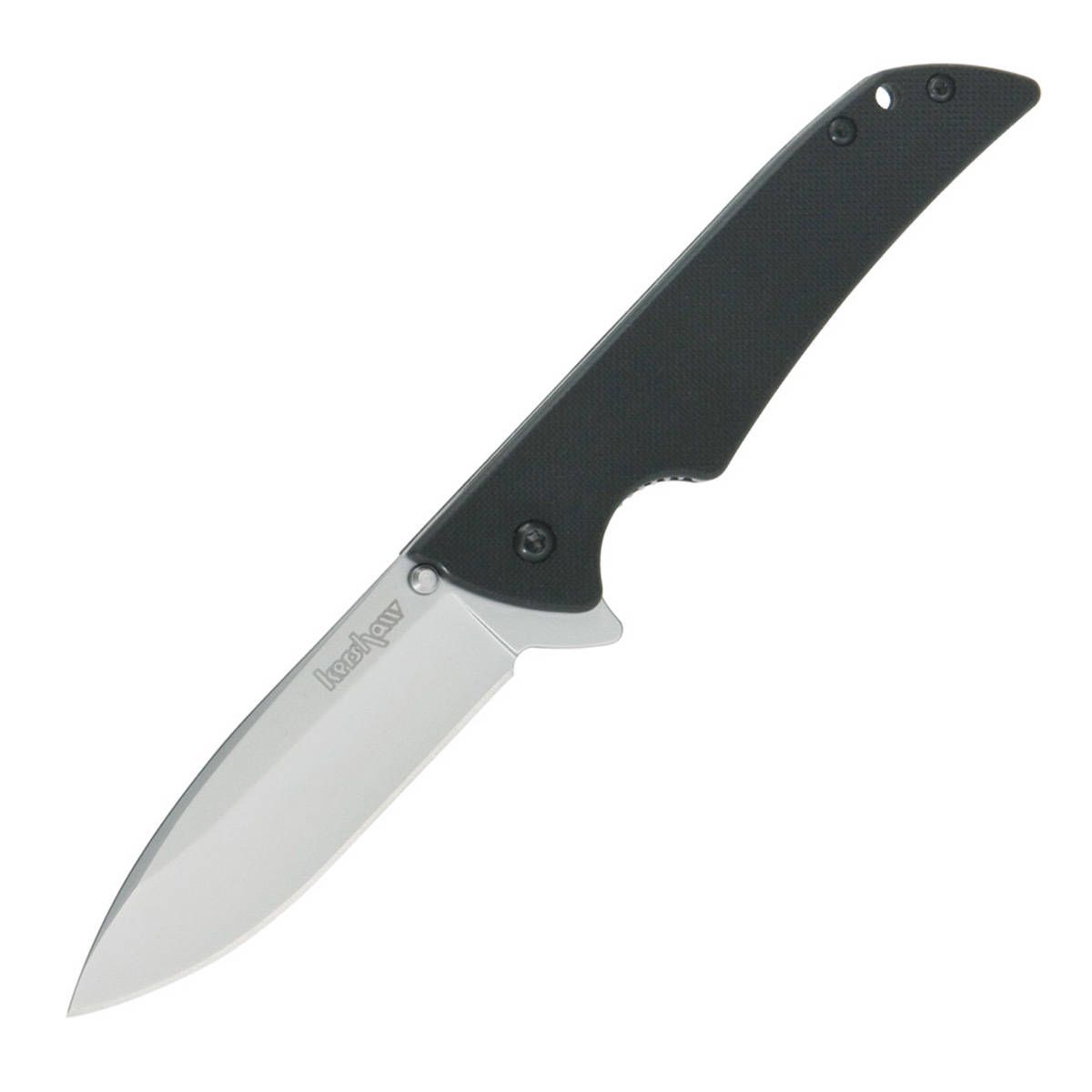 |
 |
Out of stock at Blade HQ |
 |
Not Available at Chicago Knife Works | |
Conclusion
The Kershaw Leek is a 7” folding knife with a 3” Wharncliffe hollow grind plain edge blade featuring MagnaCut. Apart from the premium steel material and excellent edge retention, the Kershaw Leek is unable to perform heavier EDC tasks. It cannot be used for food preparation or skinning. Its use is limited to cutting paper and cardboard. So if you are looking for a knife to use around the house or the office, then Leek is a good choice.
It features a black and blue gradient aluminum handle with great ergonomics. You can place all four fingers on the handle. It also comes with a lanyard hole to attach a lanyard to extend its length. It is also easy to unscrew with Torx T6 driver for cleaning and maintenance and put back together.
The pocket clip of Kershaw Leek is configured for tip-up and tip-down carry but is not ambidextrous. However, it carries well in the pocket and takes up little space. It is also lightweight and easy to carry.
The deployment and lockup on the Kershaw Leek is a breeze. It will not disappoint you from start till finish. It is quite fidgety, and the spring-assisted opening makes it easier to open the knife with one hand.
When compared to Kershaw Blur and Skyline, the Leek turned out to be a rather delicate knife with a fragile Wharncliffe blade tip. It is great for its price, but the Blur and Skyline are capable of performing heavier EDC tasks than the Leek.
